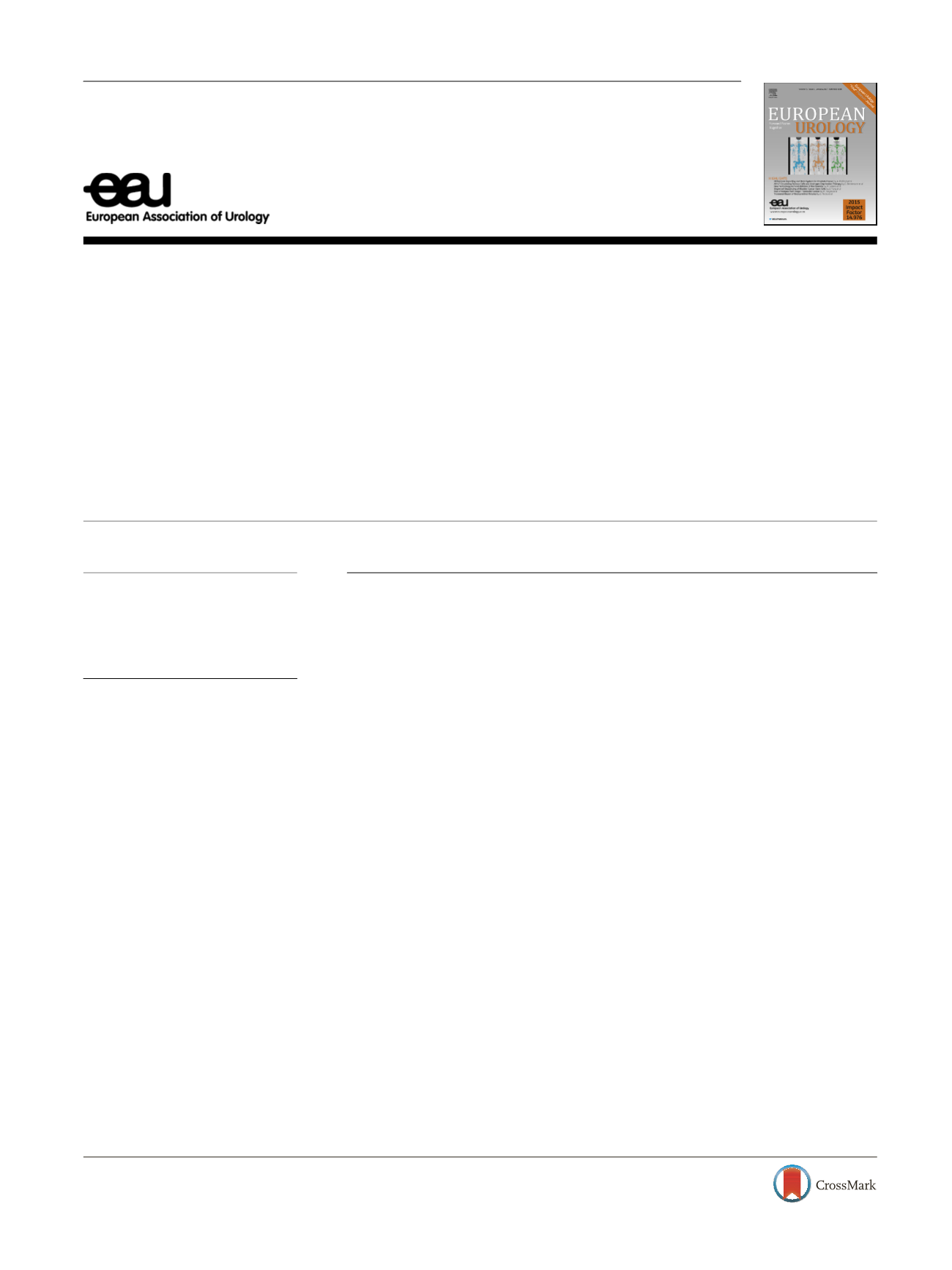

Platinum Priority – Prostate Cancer
Editorial by Mary Kathryn Downer on pp. 940–941 of this issue
Recreational Physical Activity in Relation to Prostate
Cancer–specific Mortality Among Men with Nonmetastatic
Prostate Cancer
Ying Wang
*[15_TD$DIFF]
,Eric J. Jacobs, Susan M. Gapstur, Maret L. Maliniak, Ted Gansler,
Marjorie L. McCullough, Victoria L. Stevens, Alpa V. Patel
Epidemiology Research Program, American Cancer Society, Atlanta, GA, USA
E U R O P E A N U R O L O G Y 7 2 ( 2 0 1 7 ) 9 3 1 – 9 3 9ava ilable at
www.sciencedirect.comjournal homepage:
www.eu ropeanurology.comArticle info
Article history:
Accepted June 24, 2017
Associate Editor:
Matthew Cooperberg
Keywords:
Physical activity
Prostate cancer
Survival
Mortality
Abstract
Background:
Large prospective cohort studies need to confirm the associations between
recreational physical activity (PA), including the most common type—walking, and
prostate cancer–specific mortality (PCSM) among prostate cancer patients.
Objective:
To investigate the associations of recreational PA, reported before and after
diagnosis, with PCSM, overall and by tumor risk category.
Design, setting, and participants:
In a prospective cohort study conducted in the USA,
men diagnosed with nonmetastatic prostate cancer between 1992/1993 and June
2011 were followed for mortality until 2012. Patients were included in pre-
(
n
= 7328) and/or postdiagnosis (
n
= 5319) analyses.
Outcome measurements and statistical analysis:
Cox proportional hazards models were
used to assess PCSM with recreational PA.
Results and limitations:
A total of 454 and 261 prostate cancer deaths occurred during
pre- and postdiagnosis follow-up, respectively. Prior to diagnosis, engaging in 17.5
metabolic equivalent hours per week (MET-h/wk) of recreational PA, compared with
3.5–
<
8.75 MET-h/wk, was associated with a significant 37% lower risk of PCSM (hazard
ratio: 0.63, 95% confidence interval: 0.43–0.91,
p
trend = 0.03) only among men with
lower-risk tumors (Gleason score 2–7 and T1–T2;
p
[9_TD$DIFF]
interaction =
[10_TD$DIFF]
0.02). A similar result
was seen for walking but not for other recreational PA. After diagnosis, the same
comparison ( 17.5 vs 3.5–
<
8.75 MET-h/wk) was associated with a significant 31%
lower risk of overall PCSM (hazard ratio: 0.69, 95% confidence interval: 0.49–0.95,
p
trend = 0.006), which did not differ by tumor risk category. Postdiagnosis walking had a
suggestive inverse association with PCSM (
p
trend = 0.07). These results were observa-
tional and may not be generalized to patients with metastatic prostate cancer. Residual
confounding due to a higher screening rate among men with lower-risk tumors cannot
be ruled out.
Conclusions:
The findings provide additional evidence for prostate cancer survivors to
adhere to PA recommendations, and support clinical trials of exercise among prostate
cancer survivors with progression or mortality as outcomes.
Patient summary:
In a large follow-up study of men diagnosed with nonmetastatic
prostate cancer, those who exercise more after diagnosis had a lower risk of dying from
prostate cancer.
#
2017 European Association of Urology. Published by Elsevier B.V. All rights reserved.
* Corresponding author. Epidemiology Research Program, American Cancer Society, Inc., 250 Wil-
liams Street, 6D-334, Atlanta, GA 30303, USA. Tel. +1 404 329 4341; Fax: +1 404 321 4669.
E-mail address:
ying.wang@cancer.org(Y. Wang).
http://dx.doi.org/10.1016/j.eururo.2017.06.0370302-2838/
#
2017 European Association of Urology. Published by Elsevier B.V. All rights reserved.
















